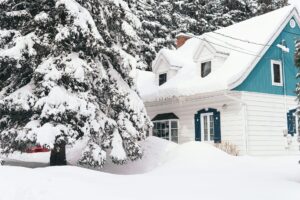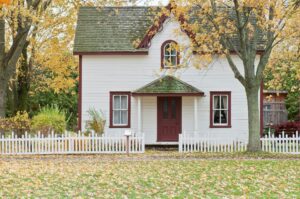Key Budget Factors, Materials, and Insider Tips
Many homeowners are doing double-takes when they get roofing quotes in 2025, and it’s not surprising. There’s a lot of chatter about materials getting pricier, labor being in high demand, and supply chains still feeling the effects of the last few years. If you’re planning to replace your roof soon—or just curious about what you might pay down the road—understanding the current cost landscape can give you a real edge.
This article dives into the core factors driving up roofing prices, from inflation and labor shortages to emerging eco-friendly materials. We’ll walk through typical cost ranges, highlight the biggest budget variables, and share tips for saving money and extending your roof’s lifespan. By the end, you’ll have a clearer sense of what goes into roofing quotes in 2025 and how to get the most for your investment.
Why Roofing Costs Have Skyrocketed
Just a few years ago, roofing was already a major expense. Now, it often takes an even larger slice of a homeowner’s budget. Several forces are at work:
- Ongoing Inflation
Global economic conditions haven’t exactly stabilized. Everything from raw materials (like asphalt and metals) to transportation fees has become more expensive. Even smaller items—nails, flashing, adhesives—are subject to price increases. - Demand and Supply Chain Disruptions
Severe weather events continue to batter certain regions, raising the need for roof repairs. Meanwhile, pandemic-era shipping delays and backlogs have yet to vanish. This combination leads to longer waits for materials and higher overall costs. - Skilled Labor Shortages
Roofing is tough, specialized work, and many areas face a shortage of trained pros. That scarcity boosts wages and, in turn, the quotes you’ll see on your estimate.
Common Roofing Materials and Their Price Ranges
1. Asphalt Shingles
- Cost Estimate: $5,000–$12,000 for an average-sized home (1,500–2,500 sq ft).
- Why Choose Them?
They’re often the most budget-friendly option and come in numerous colors and styles. Modern asphalt shingles also have improved durability compared to older versions. - What to Watch Out For
Cheaper varieties might wear out quicker in extreme weather. Always consider the brand’s reputation and warranty.
2. Metal Roofing
- Cost Estimate: $10,000–$20,000 or more, depending on square footage and metal type.
- Why Choose It?
Metal roofs can last 40 to 70 years, resist fire, and often reflect heat better—helpful in hot climates. - Potential Downsides
The up-front cost is significantly higher. If you ever need to walk on the roof for maintenance, it can be slippery and prone to dents if not careful.
3. Slate or Clay Tiles
- Cost Estimate: Typically north of $20,000, especially for larger or more intricate roofs.
- Why Choose Them?
Unmatched longevity and a classic, upscale aesthetic. Clay can last a century or more, and slate is similarly enduring. - Special Considerations
These materials can be very heavy, sometimes requiring structural reinforcement. Installation is also more specialized, contributing to the higher labor cost.
4. Synthetic or Composite Shingles
- Cost Estimate: Sits between asphalt and metal costs, usually $8,000–$18,000.
- Why Choose Them?
They mimic the look of slate or wood shakes without the same weight or level of required maintenance. - Good to Know
Quality varies widely across brands, so do your homework before committing.
For timely cost comparisons, HomeAdvisor’s Roofing Cost Guide breaks down averages by material and zip code, which can be especially handy if you’re still shopping around.
Regional Factors and Labor Rates
If your home sits in a metropolitan area with a high cost of living, you’ll likely notice higher labor fees. Rural regions might have cheaper labor, but the savings can evaporate if materials have to be shipped long distances. It’s also worth noting that areas prone to storms—hurricanes, tornadoes, or hail—can see price spikes as demand for roofers climbs after severe weather events.
Pro Tip: When comparing quotes, ask each contractor how far they source materials from and whether they have relationships with local suppliers (which might reduce delivery fees).
The Overlay Question: Is It Cheaper or Risky?
If your existing roof is still in decent shape, you might save money by layering new shingles on top of the old. Known as an “overlay,” this approach eliminates the labor and disposal costs associated with tearing off the old material.
Pros
- Lower immediate cost.
- Less waste sent to landfills.
Cons
- Can mask underlying problems like rotted decking.
- May reduce the lifespan of the new shingles due to poor ventilation or added weight.
- Building codes sometimes limit the number of layers you can have.
Discuss potential overlays with your roofer, but be wary of placing cost savings ahead of structural health. If the current roof has signs of significant damage or if local regulations prohibit multiple layers, a full tear-off is the safer bet.
Emerging Roofing Trends in 2025
1. Cool Roofs and Energy Efficiency
With utility bills climbing, more homeowners are turning to reflective or “cool” shingles that bounce sunlight away and reduce attic heat. While these can cost 10–15% more than traditional shingles, the payoff often shows up in lower energy expenses.
2. Solar-Integrated Systems
Solar panel technology keeps improving, and some roofs now come with built-in photovoltaic cells. Although it’s an investment that can easily reach $25,000 or more, tax credits and lowered electricity bills might tip the balance in its favor—especially if you’re planning on staying in your home for a while.
3. Synthetic Shingles
Materials crafted from recycled plastics or rubber blends offer a green-friendly alternative to classic asphalt or slate. They’re lighter, sometimes more durable, and often easier to install. Make sure to vet the brand’s track record; this sector’s still evolving, and quality varies.
Unseen Expenses That Can Surprise You
A roofing contractor’s initial estimate may not capture every single detail. Keep an eye out for these potential upcharges:
- Plywood Replacement
Once the old shingles come off, you might discover significant rot in the sheathing underneath. Replacing or reinforcing this can add hundreds—or thousands—to the bill. - Water Damage Repair
If you’ve had leaks, the decking, rafters, or even insulation might need replacing. Mold remediation may also be necessary if moisture has lingered. - Flashing Upgrades
In some cases, older flashing around chimneys, vents, or skylights might not meet modern standards. Replacing them is vital for preventing leaks but adds to the project’s cost. - Permit and Inspection Fees
Certain municipalities charge hefty fees for roofing permits, and skipping them isn’t an option if you want to avoid fines or complications when selling the home later.
Budgeting Strategies and Financing Options
1. Home Equity Loans or HELOCs
Using your home’s equity can spread the roofing cost over several years, although you’ll pay interest. This approach can be helpful if you need a premium roof but prefer smaller monthly payments.
2. Contractor Payment Plans
Some roofing companies partner with financing institutions to offer in-house payment plans. Always read the fine print on interest rates; a zero-interest promotion might balloon if you miss a payment milestone.
3. Insurance Claims
If your roof was damaged by hail, high winds, or fallen trees—events typically covered by homeowners insurance—your out-of-pocket expenses might shrink. Contact your insurance agent to confirm the policy details before scheduling any work.
How to Compare Estimates Without Getting Overwhelmed
It’s common advice to gather at least three quotes. Beyond comparing bottom-line prices, examine:
- Material Brands
Not all asphalt shingles or metal panels are created equal. Ask contractors which specific products they recommend and why. - Warranty Terms
Some roofers offer workmanship warranties on top of manufacturer coverage. This can save big if installation errors pop up later. - Timeline and Seasonal Discounts
Roofing off-season (often winter in non-snowy climates) can yield discounts, but be sure the weather won’t compromise the quality of the installation.
For additional tips on contractor selection and best practices, head over to Roofing Contractor Magazine for insights from industry veterans.
Maintenance Matters: Protecting Your Investment
A roof can last 20–50 years or more, depending on the materials chosen and how well it’s cared for. Simple steps can go a long way:
Annual Inspections
Hiring a professional to check for missing shingles, worn flashing, or debris prevents small issues from mushrooming into major repairs.
Clean Gutters
Clogged gutters let water pool on your roof’s edges, seeping under shingles and accelerating deterioration.
Trim Overhanging Branches
Constant scraping or buildup of leaves can lead to moisture retention and eventual rot.
Address Leaks Immediately
Even minor drips can cause structural damage if ignored. Spot-treat problem areas or call in a pro if you’re uncertain about the source.
If you want a more detailed maintenance checklist, Angi has user-friendly guides that break down monthly, seasonal, and annual tasks.
Realistic Ballpark Figures for 2025
While every home is unique, here’s a rough guide for full-roof replacements:
- Smaller Roof (around 1,000–1,500 sq ft)
$4,000–$9,000 - Mid-Range (1,500–2,500 sq ft)
$5,000–$15,000 - Large Roof (2,500 sq ft and up)
$7,000–$20,000+
Opting for specialized materials like slate, tile, or solar shingles can push these numbers far higher. Use Consumer Reports’ Roofing Buying Guide to get more clarity on different materials’ longevity and performance.
Planning Your Roofing Project Wisely
In 2025, roofing costs may feel daunting, but a well-informed approach can prevent nasty surprises and ensure every dollar counts. If your roof is nearing the end of its life—or if you’re dealing with persistent leaks—it pays to research materials thoroughly, gather multiple quotes, and consider both short-term and long-term value.
Keep an eye on technology and environmental incentives as well; solar-integrated or eco-friendly roofing might cost more at the outset but deliver real savings over time. And remember, no matter how top-notch your new roof is, regular maintenance will always be your ally in preserving it.
Ready to move forward?
Take a closer look at local material costs, talk to trusted roofing contractors, and plan for both best-case and worst-case scenarios. By understanding market conditions and preparing for unexpected extras, you’ll be one step ahead in securing a sturdy, durable roof that serves your home well for years to come.




